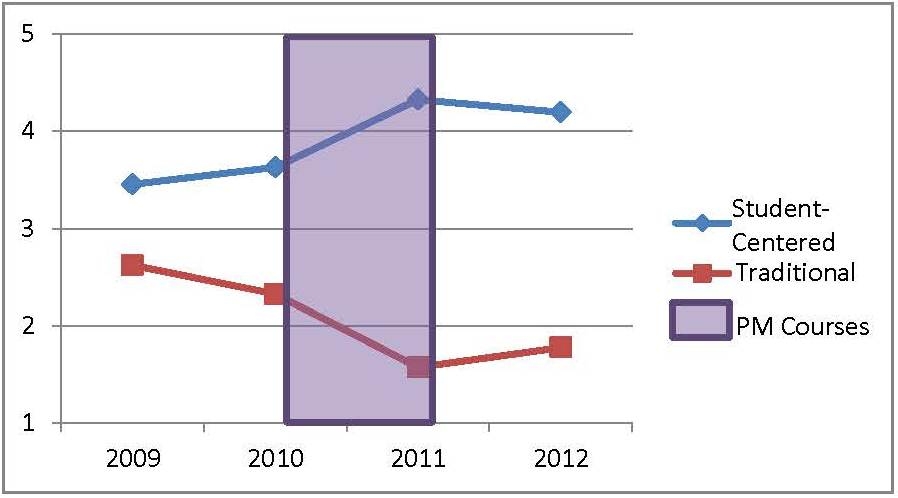
First of all, we wish to begin by thanking all of you for taking time out of your busy lives to fill out the many surveys that have been used for research purposes. We have learned a great deal from all of the information gathered from the surveys and thought we'd share a small portion of this with you.
Recall that one particular survey asked questions like the following:
• Children should not solve simple word problems until they have mastered some number facts.
• Most young children can figure out a way to solve many mathematics problems without any adult help.
• Teachers should teach exact procedures for solving word problems.
• Teachers should encourage children to find their own solutions to math problems even if they are inefficient.
We refer to this particular survey as the "Survey of Teaching Practices." Some of the survey questions are designed to identify changes in beliefs about instruction as teachers progress through the Primarily Math program. For categorizing purposes, the phrases "traditional" and "student-centered" are used to identify two different types of thinking about teaching practices which occur at opposite ends of a spectrum of beliefs. (Most of us have beliefs about teaching that, as a collective, lay somewhere in between these two "extremes.") Results from the survey are designed to quantify changes in teachers’ beliefs along this spectrum.
Since the survey is administered before, during and after participation in the program (so, the number of times you completed this survey depends on when you started Primarily Math) we are able to determine changes in beliefs. Overall, findings show that teachers' beliefs tend to become more student-centered and less traditional during their time in Primarily Math, and for each cohort that has completed the program, the difference is statistically significant.
Although a complete summary of results is not yet ready for publication, FIGURE A shows a summary of the results from Cohort 2 teachers. The graph shows a significant increase in "student-centered" beliefs upon completion of Primarily Math (the purple box) and a decrease in "traditional beliefs". The graphs of the change in beliefs for teachers in Cohorts 1 and 3 are similar. (Cohort 4 teachers have not yet completed the program, so a post administration of the survey has not yet taken place.)
You might ask, "Did we really need a survey to determine this? After all, isn’t it obvious that teachers' thinking would change as they completed their coursework?" It may indeed seem "obvious" but anecdotal evidence does not result in research that has the potential to impact the body of knowledge used to identify best practices in mathematics education. Quality research requires a well-designed statistical study with quantifiable results.
So, again, thank you for all of the time you have spent completing surveys for Primarily Math. You can rest assured that it is making a difference.
Watch for additional information about survey results in future issues.